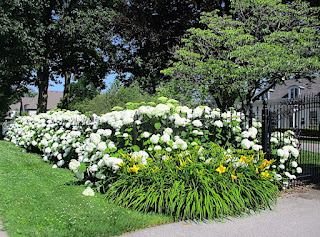Snowdrops and crocuses are certainly among the best-known early bloomers. But primroses, daffodils, anemones, hyacinths, ornamental leeks, and tulips are also attractive species among the harbingers of spring.
The ideal time: As a rule, the early bloomers are planted in autumn. Around October/November, depending on location is a good time for almost all early bloomers. If you have missed this time, you can still try your luck at the beginning of the year if the winter is not too severe. As soon as a few frost-free days are forecast, plant the early bloomers.
The ideal location: The suitable location is completely different depending on the type of flower. Tulips, for example, prefer sunny spots and can cope very well with a little more dryness. Snowdrops, on the other hand, like to stand in shady places, such as along walls or under deciduous trees. Just like daffodils, they need slightly moist soil.
Planting Early Bloomers - the Best Tips
- Place the bulbs about ten to twelve centimetres deep in the ground. A bulb planter is very helpful when planting bulbs. Especially if you want to plant a lot of early bloomers.
- Leave a space of about 7 to 10 centimetres between the individual bulbs, depending on the type of plant.
- If the bulbs have already been planted, do not dig them in completely, but leave them about two to three centimetres out of the ground.
- Plant the bulbs in tubs or pots and keep the soil slightly moist. Make sure that the soil does not become waterlogged and protect the bulbs from frost.
- After you have planted the bulbs in the garden, you do not need to worry about anything else.
- Fertilize the early flowering bulbs as soon as the first leaves appear.
Once you have planted the early flowering bulbs in the ground, most species will later reproduce on their own. But of course, you can also propagate early bloomers like snowdrops yourself.
The Importance of Crocuses
The first crocuses bloom between February and March. The mostly purple flowers form colourful spots in the snow and herald the beginning of spring. But crocuses carry a number of other meanings:
The crocus is an iris plant that grows in gardens, in meadows or in the mountains. Its flowers are usually purple, but there are also yellow or white crocuses.
Crocuses have been around since ancient times. At that time, the spring-flowering plants were regarded as a sign of hope for supernatural life and symbolised eternal youth. They were therefore planted on the graves of the deceased.
In addition, crocuses stood for passionate love in ancient times. The saffron crocus in particular was used to prepare a love potion that was drizzled on the beds of newly married couples.
Saffron crocuses are also used as a spice. They are considered aphrodisiacs. Since saffron was also used to dye royal robes, for example, they were an expensive commodity.
Saffron crocuses were also a valued medicinal plant against inflammations, eye infections, mood swings and circulatory problems.
Propagating Snowdrops by Seeds
Once you have planted snowdrops, it is usually enough to let nature take its course. The magic word is myrmecochory. After the ovary has burst open, the ants pick up the seed to eat the nutritive body and thus spread the seed.
As convenient as natural flower propagation is, it has the disadvantage that you have no influence on where the snowdrops grow later. If you want to influence where the snowdrops later sprout in your garden, you have to distribute the seed yourself. The seed is taken from the ovary of the snowdrop. You can tell when the ovary is mature and the seed is ready to be taken by looking at the downward-sloping flower stalk. Before you plant the seed in the soil in autumn, store it in a cool and dry place.
Propagating Snowdrops by Dividing them
Snowdrops look pretty and are also quite undemanding flowers. However, the soil should be as humus-rich and water-permeable as possible. In March, when the snowdrops are wilting, dig up the clumps. The clusters consist of mother and daughter bulbs. After you have separated the bulbs from each other, put them back into the soil immediately so that they do not dry out.
The same method can be used to propagate Tulips or Daffodils, but wait until their leaves are yellow in late spring or early summer.
Planting Spring bulbs now will bring you early color and joyful blooms - before everything else shows up in your garden. Nothing beats the first spring show of brilliant yellow Daffodils and Crocuses in all colors. They are really eye-catching!
<><><><><>
.















